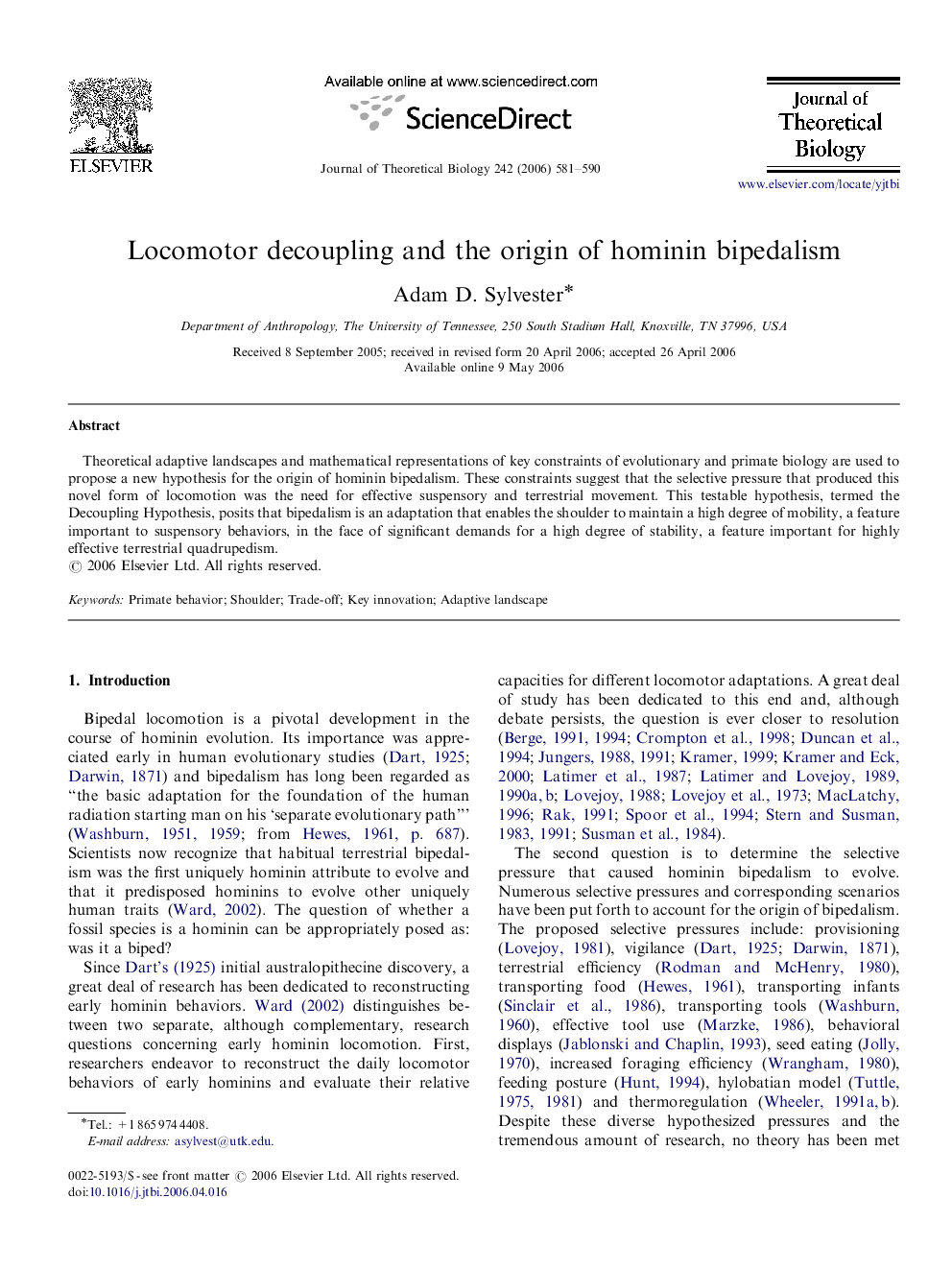| Article ID | Journal | Published Year | Pages | File Type |
|---|---|---|---|---|
| 6371724 | Journal of Theoretical Biology | 2006 | 10 Pages |
Abstract
Theoretical adaptive landscapes and mathematical representations of key constraints of evolutionary and primate biology are used to propose a new hypothesis for the origin of hominin bipedalism. These constraints suggest that the selective pressure that produced this novel form of locomotion was the need for effective suspensory and terrestrial movement. This testable hypothesis, termed the Decoupling Hypothesis, posits that bipedalism is an adaptation that enables the shoulder to maintain a high degree of mobility, a feature important to suspensory behaviors, in the face of significant demands for a high degree of stability, a feature important for highly effective terrestrial quadrupedism.
Related Topics
Life Sciences
Agricultural and Biological Sciences
Agricultural and Biological Sciences (General)
Authors
Adam D. Sylvester,
